Can you use a dehumidifier in the bathroom? It's possible – but experts recommend safer, alternative solutions
Is a dehumidifier in the bathroom a yay or a nay from the experts?

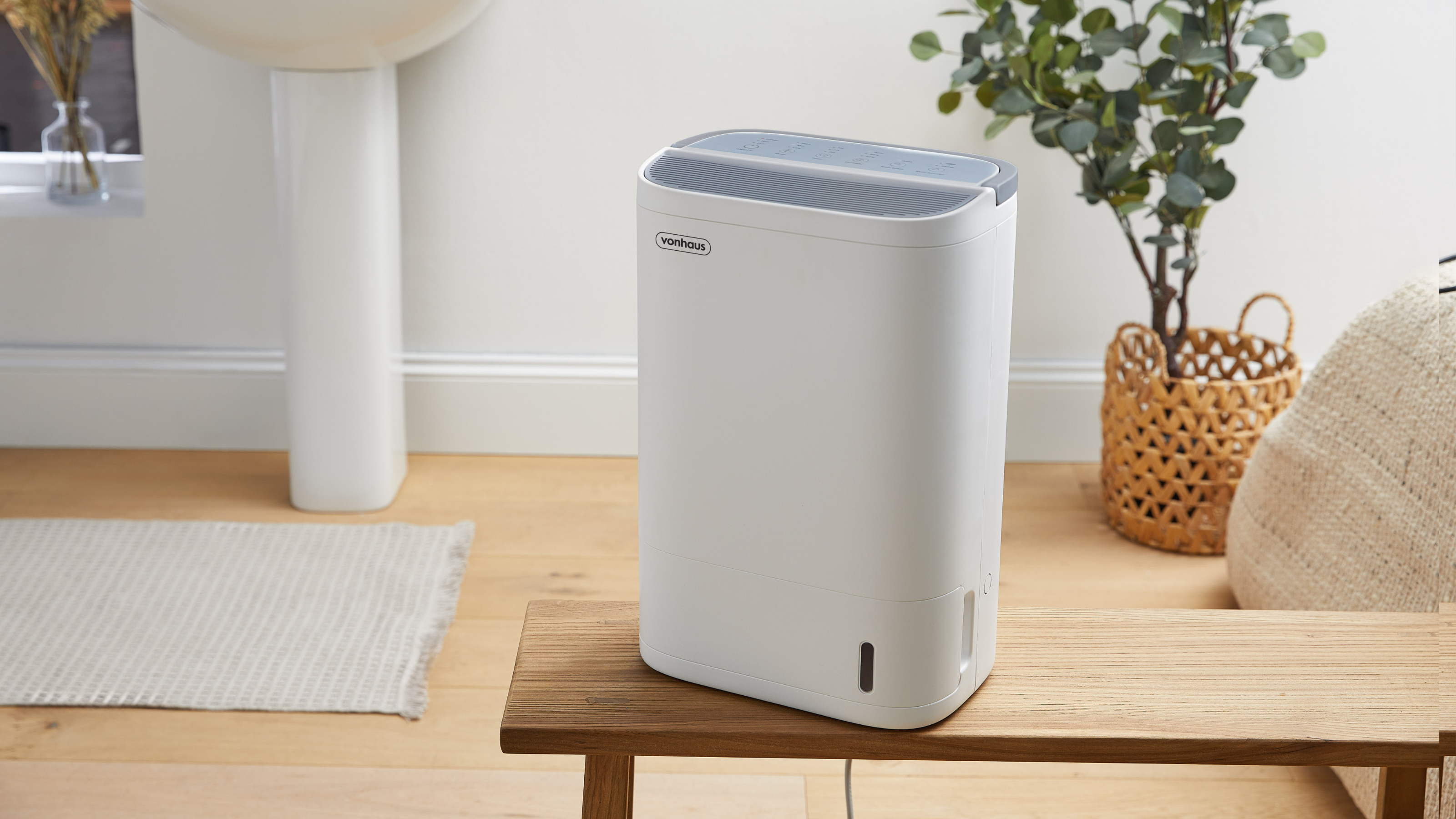
Bathrooms are notorious for being humid environments, with excess moisture potentially leading to issues like mould, damp, and condensation. While there have long been solutions to tackling damp bathrooms, such as using extractor fans and opening windows, sometimes they aren't enough to cut it. This might have led you to question whether you can use a dehumidifier in the bathroom.
Given the rather extreme levels of humidity the bathroom can reach when you're taking a shower, coupled with the fact a dehumidifier is still an electric appliance, there are many question marks surrounding the safety of whether or not the best dehumidifiers have a place in the bathroom.
That’s why we’ve asked our trusty experts to clarify whether it’s safe and recommended to use a dehumidifier in the bathroom, or if it's a place to avoid putting a dehumidifier altogether.
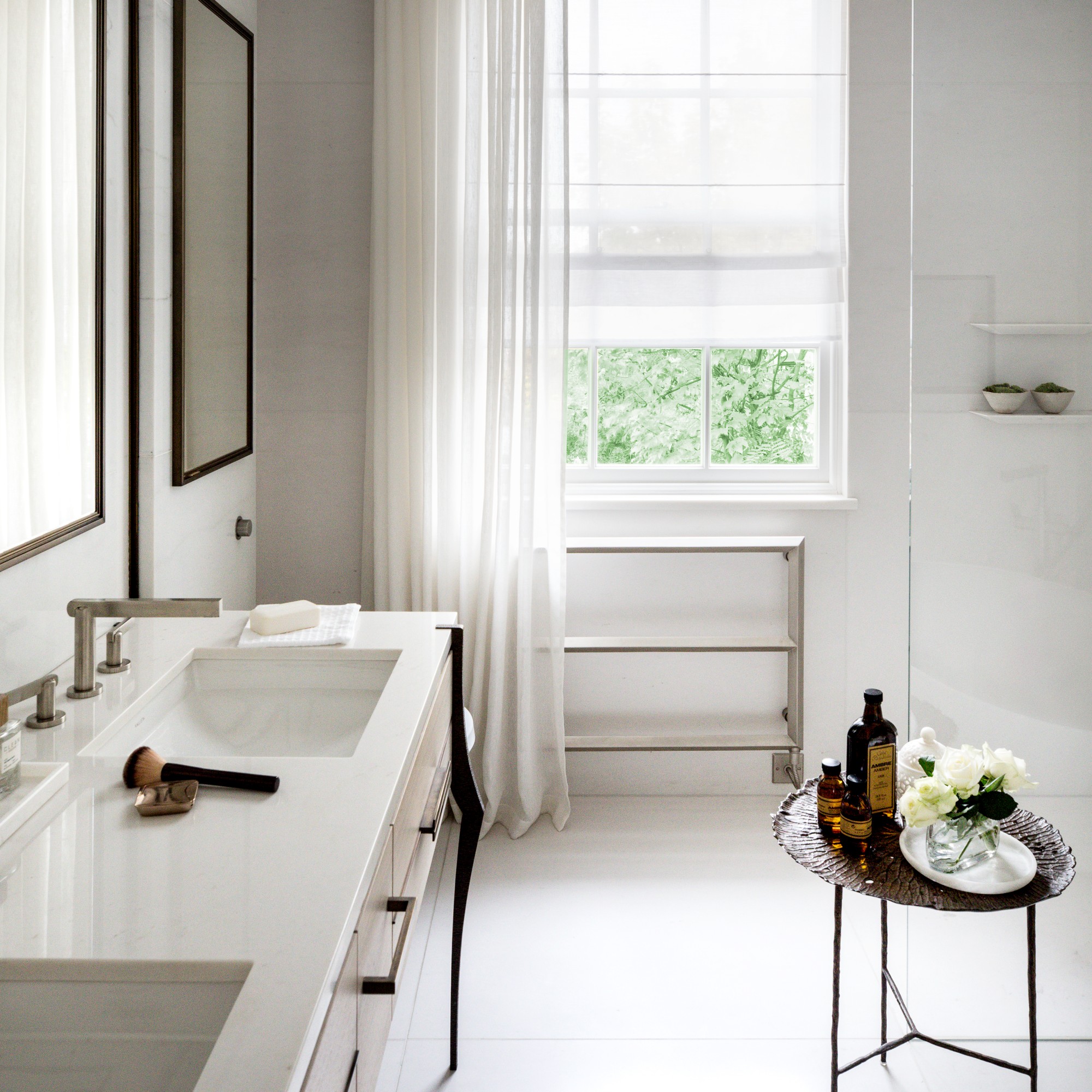
In recent years, dehumidifiers have skyrocketed in popularity as one of the favoured home appliances – especially in the autumn and winter months, to assist in getting rid of damp. But with that, many questions about their proper use and abilities have arisen: can you leave a dehumidifier on overnight? Or does it get rid of mould?
Spoiler alert: it doesn't. But it is a great preventative measure against the growth of mould in wet and humid places, so the possibility of using them in the bathroom is appealing. But knowing the dos and don'ts of doing so is the key to avoid falling foul to a serious dehumidifier mistake.
Can you use a dehumidifier in the bathroom?
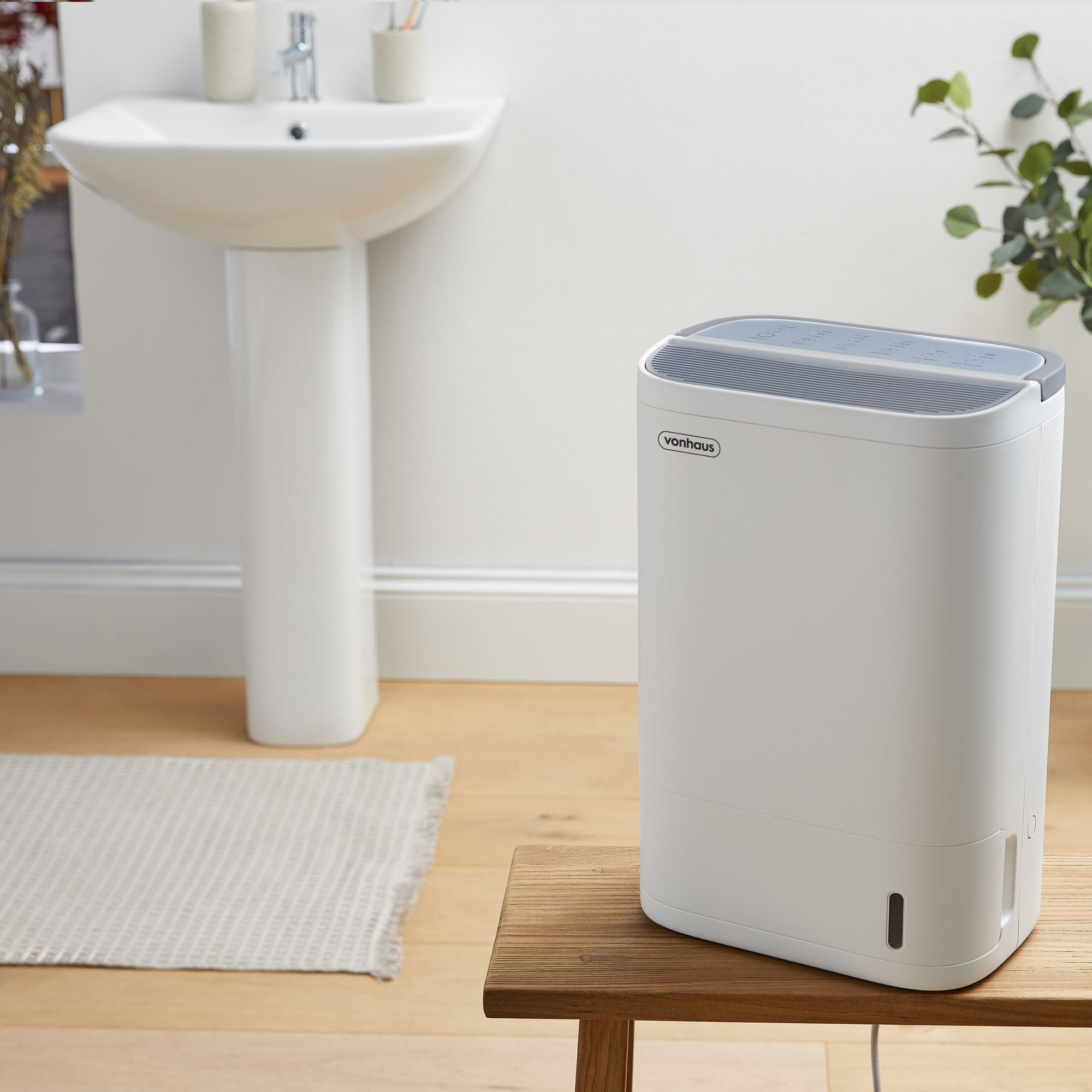
'In general, dehumidifiers can help reduce the excess moisture in a bathroom, which will prevent the growth of mould and the development of musty odours which are caused by these spaces' high humidity levels and it is safe,' begins David Miloshev, Fantastic Services' licensed electrician and appliance technician.
However, it comes with big words of warning and very specific circumstances to make it a viable option; as well as very specific types of dehumidifiers for the job. ‘Before you use a dehumidifier in the bathroom, there will be some important considerations to keep in mind to guarantee your safety and the appliance's optimal performance,' continues David.
Sign up to our newsletter for style inspiration, real homes, project and garden advice and shopping know-how
This includes ensuring the dehumidifier is rated and specifically designed for high-moisture areas. Additionally, this is what to look out for when using a dehumidifier in the bathroom.
1. Use a grounded or GFCI outlet
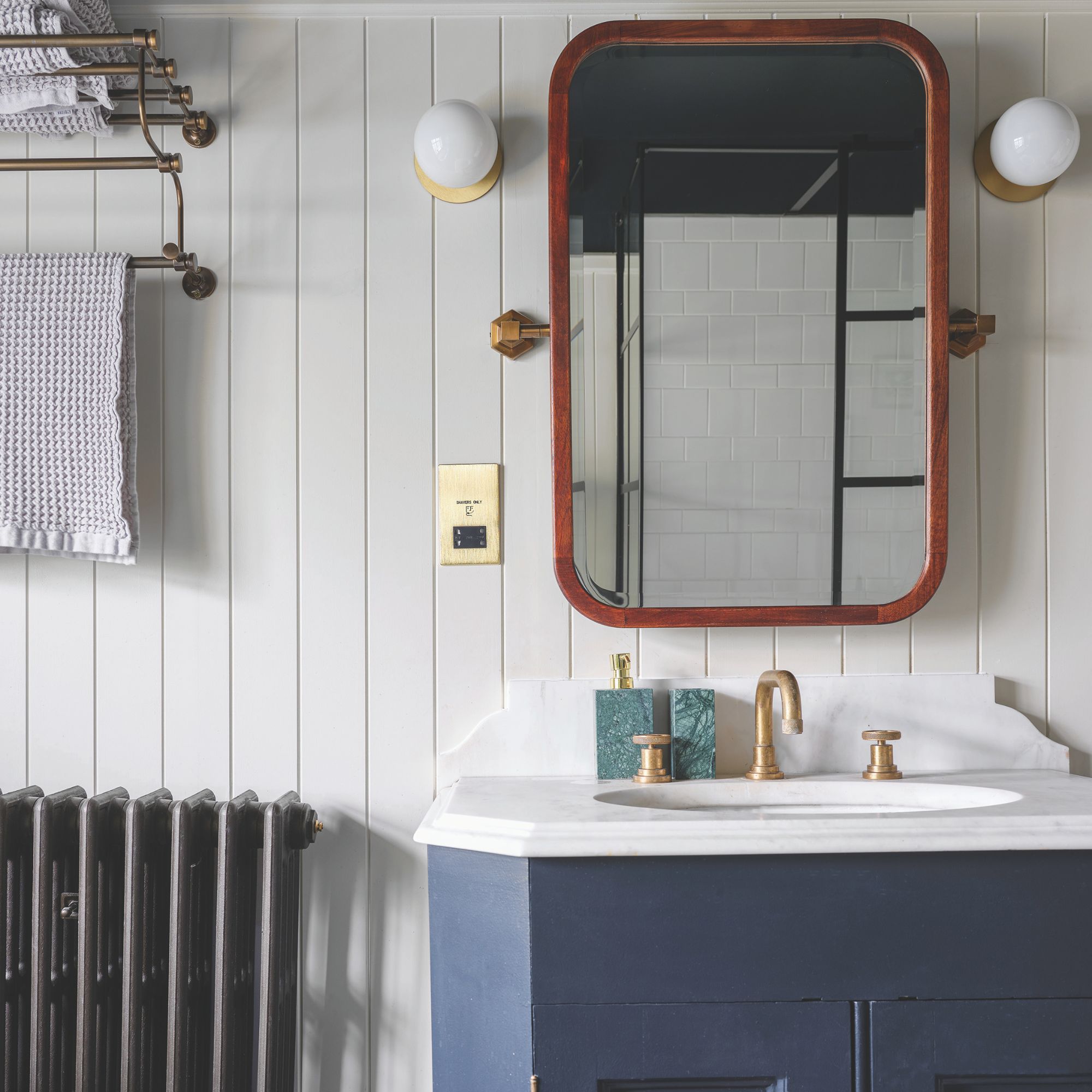
A properly grounded outlet prevents potential power surges that could result in the dehumidifier's overloading or an electrical shock.
'Make sure your dehumidifier is plugged into a properly grounded outlet and avoid using extension cords because they usually can't handle the power requirements of a dehumidifier and can pose a safety hazard, especially in a bathroom setting,' explains David.
'Given the proximity to water sources in a bathroom, it's recommended to have a GFCI outlet installed, which can quickly cut off power in case of an electrical fault and enhance safety.'
2. Right positioning
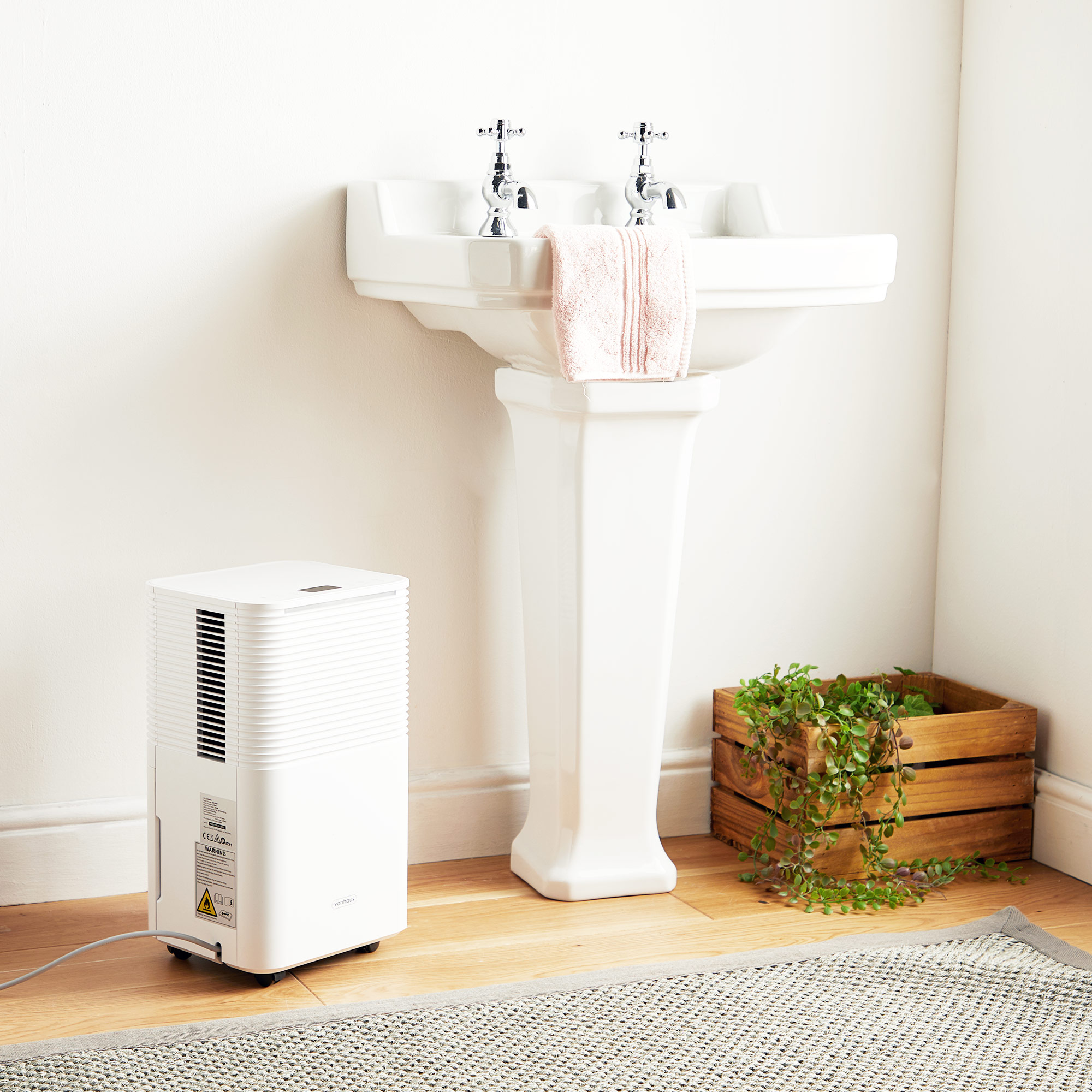
Placing the dehumidifier in a spot where it won't come into contact with a source of water, like the shower, is key to maintaining safety.
‘It'll be safest to place it in a location where it can effectively capture moisture from the air, while at the same time, it's away from water sources to prevent any electrical hazards,' says David. Suffice to say, if you have a small bathroom where finding a safe spot away from water is unlikely, just avoid using an electric dehumidifier in a bathroom altogether.
Instead, opt for using a non-electric moisture absorber like the Absodry Duo Family dehumidifier, which simply works to absorb excess moisture by using crystals. It's completely safe, and an affordable way to dry a room without a dehumidifier.
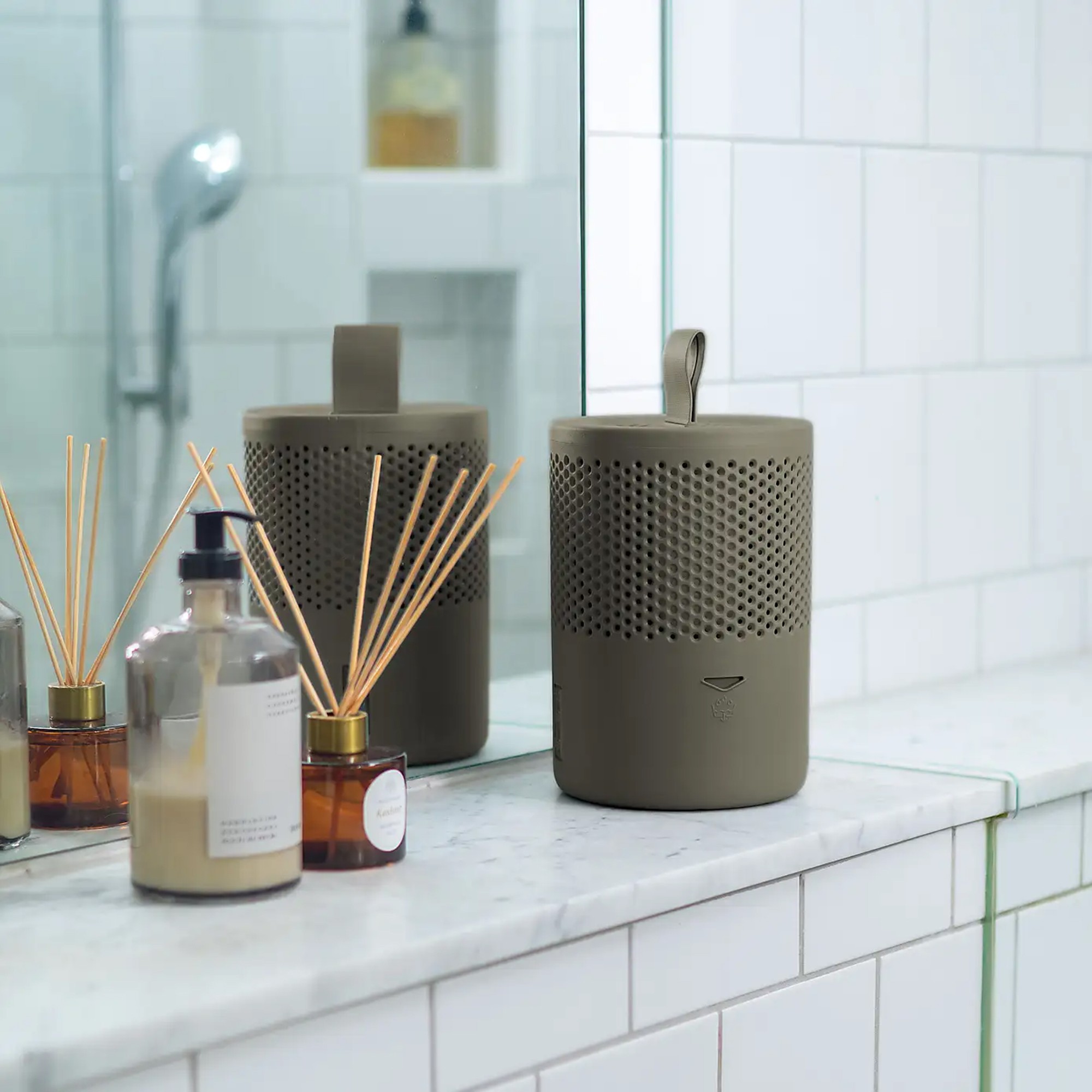
Alternatively, while Chris Michael, managing director at Meaco doesn't recommend placing a dehumidifier in the bathroom itself, he notes that having it nearby will also be effective.
‘We don't advise using a dehumidifier in the bathroom because they typically aren't IP rated. But positioning a dehumidifier as close to the bathroom as possible with the door open still can help to reduce moisture quickly in that room,' he assures.
3. Proper air circulation
Relying solely on your dehumidifier to do all the work in your bathroom might not be the best of ideas. Instead, help it out by also opening the windows everyday and putting the exhaust fan on to increase ventilation and air circulation.
'Make sure that your bathroom has adequate ventilation, such as an exhaust fan, to help expel moist air. Using your dehumidifier in combination with this can be more effective in maintaining a dry environment and a lot safer,' adds David.
Shop dehumidifiers and moisture absorbers
Although it is possible to use a dehumidifier in the bathroom, we're much more comfortable sticking with simply placing the unit in the hallway leading up to the bathroom, or simply opting for their non-electric counterparts altogether.
If you're interested in trying one of these safer methods, here's our top recommendation for the best dehumidifier money can buy, as well as our picks for moisture absorbers you can safely place in your bathroom for moisture control.
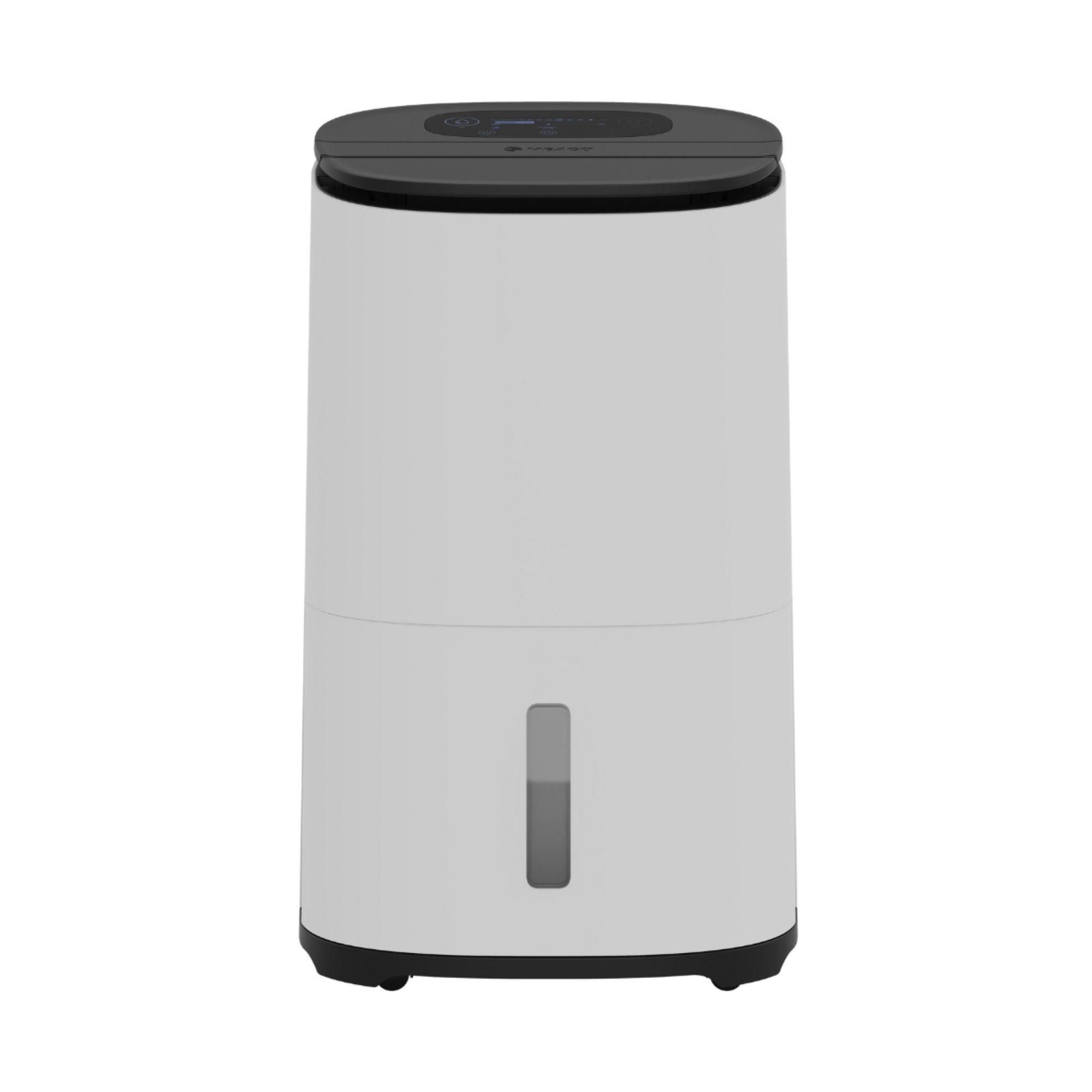
The MeacoDry Arete Two instantly shot up to the top spot after we tested it, performing superbly at removing excess moisture from the air and even drying laundry in just hours. If you're trying to tackle damp in a bathroom, simply angle the unit by the door, set the humidistat, and let it do its magic.
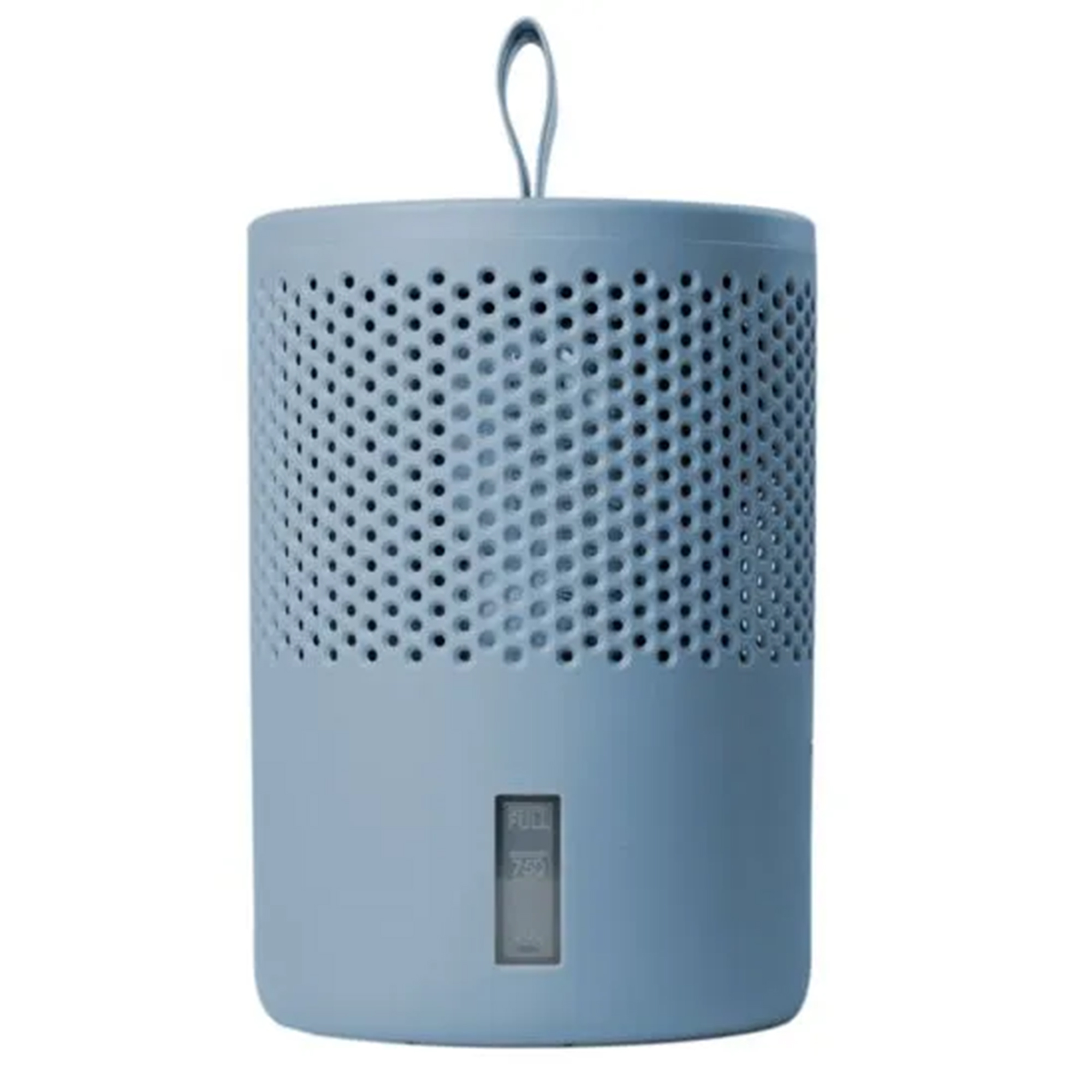
The sellout Absodry Duo Family dehumidifier is a huge hit among shoppers, and for good reason. Not only is it a stylish dehumidifying solution, it's also one that uses no plugs and no electricity, making it ideal in a bathroom. It even has a couple of different colourways to choose from.

This small, non-electric dehumidifier is designed for all internal humid spaces in your home where traditional dehumidifiers aren't viable; making the bathroom its ideal place. The two-tablet system provides up to 33% more absorption than other similar products on the market, and we love its neutral and discreet colourway.
The bottom line is this: if you're going to use a dehumidifier in the bathroom, if you're in doubt, always refer to the manufacturer's manual and take the necessary precautions. Better yet, we'd be in favour or just ditching electrical ones in general and just relying on the non-electric models. Not only are they safer, but they also cost nothing to run; giving us peace of mind and lower energy bills this winter.

Sara Hesikova has been a Content Editor at Ideal Home since June 2024, starting at the title as a News Writer in July 2023. She is now also the Ideal Home Certified Expert in Training on Furniture, and so far has tested over 150 different sofas.
Graduating from London College of Fashion with a bachelor’s degree in fashion journalism in 2016, she got her start in niche fashion and lifestyle magazines like Glass and Alvar as a writer and editor before making the leap into interiors, working with the likes of 91 Magazine and copywriting for luxury bed linen brand Yves Delorme among others.